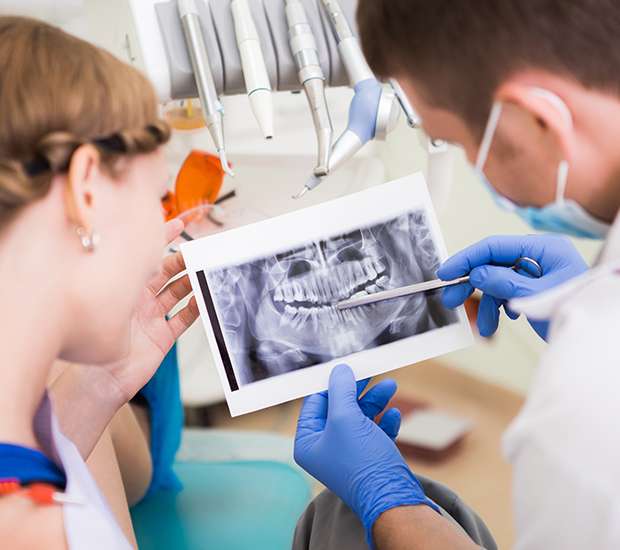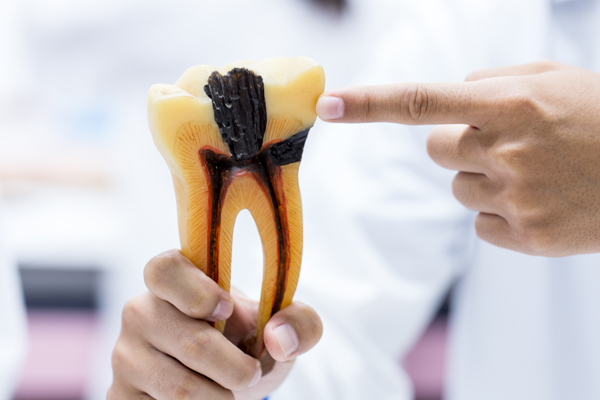Will I Need a Bone Graft for Dental Implants Palmer, AK
A bone graft, or bone augmentation, for dental implants ensures a strong and secure hold for the artificial tooth before placing the implant. Bone grafting rebuilds density in the jawbone after the loss of bone occurs, which commonly results after tooth loss. Although a bone graft procedure may not be a desirable experience, it makes a massive difference in the long-term results of the dental implant process.
Our team offers a bone graft for dental implants when necessary, along with providing assistance and treatment throughout the entire dental implant process. There is no reason to live with the insecurity of a missing tooth or several teeth. We can help restore the appearance of one's smile and the function of the teeth.
To learn more about a bone graft for dental implants, give us a call at (907) 745-1966 to schedule a consultation visit.
Bone Grafting for Dental Implants
The Centers for Disease Control and Prevention, CDC, states that nearly 1 in 5 adults aged 65 or older has lost all of their teeth. It is essential to restore lost bone in the jawbone through bone graft treatment after tooth loss. By completing this procedure, it can help to ensure a future implant and artificial tooth are properly supported long-term. A bone graft is a procedure to rebuild lost bone inside the jaw and recommended for patients who experience loss of bone density as a result of tooth loss.
Good candidates for a bone graft include those who are planning to undergo implants for missing teeth, those with tooth loss or gum disease, and those with bone loss. While the jaw and gums support natural teeth, the teeth also help to stimulate the jawbone. When tooth loss occurs, the supporting bone loses its primary purpose, and the process of resorption begins. This process occurs when the body absorbs calcium from the jawbone and distributes it to other areas of the body.
The lack of calcium in the jawbone makes it more difficult to support the implant. Resorption will also mean there is less bone that can bond with the titanium implant and help to solidify a firm hold of the implant. The purpose of a bone graft procedure is to rebuild bone density that may have become lost after the natural tooth becomes lost.
“It is essential to restore lost bone in the jawbone through bone graft treatment after tooth loss.”
When Bone Grafting Is Necessary
A dentist typically uses a thorough oral examination and X-rays to determine if a bone grafting procedure is necessary for dental implants. The jawbone commonly loses density as a result of unreplaced missing teeth. Bone is preserved by the pressure and stimulus caused by chewing, but when no tooth is present, the jawbone is no longer stimulated and starts to deteriorate. It is important to correct bone deterioration as it can cause more damaging complications, such as tooth loss. Dentists perform bone grafts using bone from the patient’s body, usually from the back of the jawbone.
Signs That Indicate a Bone Graft Is Necessary
There are two primary signs the dentist may look for when determining if a bone graft is necessary. The first sign is the thickness of the bone inside the jaw. The second sign is how soft or hard the existing bone is. If the bone inside the jaw is thin, then we will likely recommend a bone graft. If the bone is soft, then a minor bone graft might be required to strengthen the bone and provide additional support for the implant. According to Mayo Clinic, periodontitis damages the soft tissue, destroying the bone that supports your teeth, so gum disease is a sign of potential bone loss as well.
“If the bone is soft, then a minor bone graft might be required to strengthen the bone and provide additional support for the implant.”
How Bone Grafting Works
There are different types of bone grafts, including autograft, allograft, xenograft, and an alloplastic graft. The majority of procedures use real bone, although a synthetic bone material is used for an alloplastic graft. The steps involved depend on the type of bone grafting procedure. It typically involves taking either natural bone or a synthetic bone material and placing it into the jawbone above the missing tooth through a minor surgical procedure. The bone must then heal and fuse with the existing bone in the area, which typically takes two to three months.
Bone grafting is a fairly common procedure. A 2016 study found that nearly half of 800 people with dental implants required a bone graft prior to implantation. A bone graft is beneficial for patients as it provides additional support to the dental implant. Otherwise, the dental implant placement process may have a higher risk of failure. The bone augmentation can improve the appearance, function, and oral health of the patient.
“It typically involves taking either natural bone or a synthetic bone material and placing it into the jawbone above the missing tooth through a minor surgical procedure.”
Check out what others are saying about our dental services on Google: Will I Need a Bone Graft for Dental Implants in Palmer, AK
What to Expect After the Procedure
Although patients differ in their condition, oral health status, and recovery, there are various ways to help the jaw heal faster. Bone grafting may result in swelling, bruising, and minor bleeding of the gums after the procedure. To recover as quickly as possible, stick to soft foods and avoid dark beverages or sugary drinks. Along with that, it is essential to practice good oral hygiene through a gentle brushing and flossing routine and using mouthwash.
We encourage patients to look for a qualified oral surgeon or implant specialist as they are most skilled at bone graft procedures. It is important that patients play an active role in their oral health and understand their treatments as well as who is performing them. As your dentist about their experience with bone grafting and how successful their treatments were. It may be a good idea to look at before-and-after testimonials and patient reviews online prior to scheduling a consultation.
“To recover as quickly as possible, stick to soft foods and avoid dark beverages or sugary drinks.”
Questions Answered on This Page
Q. When is bone grafting necessary?
Q. How does the bone grafting procedure work?
Q. What can I expect after a bone graft procedure?
Q. What alternative options are available in place of bone grafting?
People Also Ask
Q. How should someone prepare for dental implant surgery?
Alternative Options
Although bone grafting may be the only procedure available for single-tooth implants, there are a few alternative options for those seeking full arch or full mouth dental implants. These options include a full arch prosthesis or a zygomatic prosthesis.
Full arch prostheses are fastened to the jaw using 4 to 6 implants that provide adequate security. For this procedure to work, the patient must have 4 to 6 areas of sufficient bone to effectively place the implant arch. Zygomatic prostheses are long implants embedded in the zygoma, or cheekbone, as opposed to the jawbone. Since the implant is not attached to the jaw, a bone graft is not necessary even for patients with low bone density. A review of 2,402 Zygomatic implants showed a success rate of 96.7% over a 12-year period. Zygomatic implants are found to be the safest, most effective procedure in oral surgery.
“Since the implant is not attached to the jaw, a bone graft is not necessary even for patients with low bone density.”
Frequently Asked Questions About Bone Grafting
Q. How do platelet-rich plasma and bone morphogenetic protein improve bone growth?
A. Your dentist may recommend platelet-rich plasma and bone morphogenetic protein as a way to help regenerate and strengthen bone in the bone grafting process. Platelet-rich plasma may also increase the healing time after the procedure.
Q. What qualities should I look for in a dental professional who offers bone grafting?
A. Experience is always an advantage when choosing a bone grafting specialist, but it is not the only factor to consider. It is helpful to have a conversation with the professional and ask questions about their education and training. You can also ask for more information about how the process works and who else will assist in the treatment process.
Q. What possible options might a dentist recommend aside from bone grafting?
A. If the patient intends to replace a damaged or loose tooth with a dental implant, then tooth extraction is necessary. A dentist may also recommend treatment for periodontal disease in addition to a bone grafting procedure, along with filling and repairing any eroded or damaged teeth.
Q. How long does a bone grafting procedure take?
A. The length of bone augmentation is dependent upon the type of procedure(autograft, alloplastic, and more.), the location of the bone graft, and various other factors. However, it is typically a routine procedure that does not take more than several hours at most. The patient can return home soon after the process is complete.
Q. How much does bone grafting cost?
A. The cost of bone grafting depends on the patient’s case, the severity of their condition, and the type of bone graft being performed. On average, bone grafting can cost between $200 to $1,200 per graft. We encourage patients to speak with their insurance provider to find out what their plan covers and learn about any copays that the procedure may entail.
Quality Dental Services Can Transform Your Smile
By visiting us as soon as possible, our team can help get you the professional treatment you need. Instead of waiting around and allowing the symptoms to get worse, we can provide you with treatment options.
Dental Implant Terminology
Call Us Today
We offer bone grafting for dental implants and help patients through the process. If you are interested in learning more about bone grafts as well as the implant process in general, then get in touch with us at 907-745-1966 today.
Helpful Related Links
- American Dental Association (ADA). Glossary of Dental Terms. 2021
- American Academy of Cosmetic Dentistry® (AACD). Home Page. 2021
- WebMD. WebMD’s Oral Care Guide. 2021
About our business and website security
- Valley Neighborhood Dental Center was established in 2013.
- We accept the following payment methods: American Express, Cash, Check, Discover, MasterCard, and Visa
- We serve patients from the following counties: Matanuska-Susitna
- We serve patients from the following cities: Palmer, Farm Loop, Butte, Wasilla, Anchorage, Knik-Fairveiw, Eagle River, Talkeetna and Houston
- Norton Safe Web. View Details
- Trend Micro Site Safety Center. View Details







